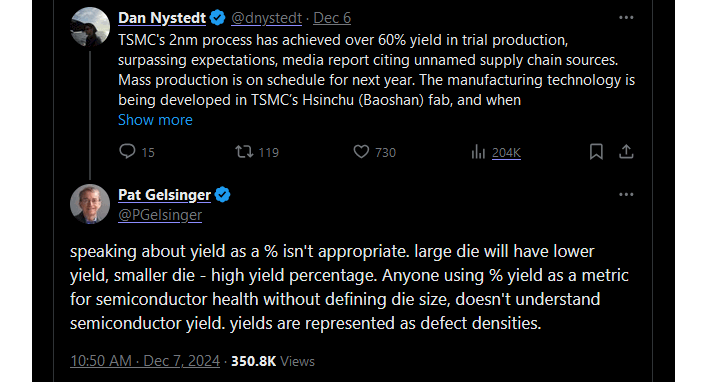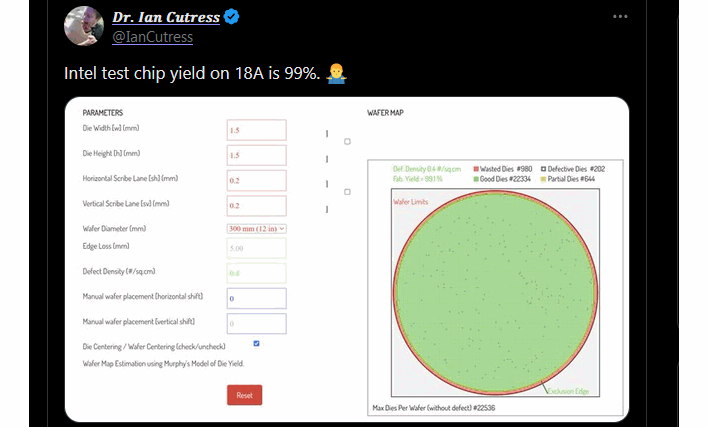Former Intel CEO Pat Gelsinger Sets The Record Straight On 18A Chip Yields
There are plenty of reasons not to do so, but the foremost is that fact, as pointed out by former CEO Pat Gelsinger himself. He was replying to something else entirely—an analyst tweet about TSMC—but Pat correctly points out that talking about yields in terms of percentages makes no sense at all unless you're talking about a specific die. We can talk about yields of, say, Raptor Lake-S in percentages, but speaking about a process in general, you need to speak in terms of defect densities.
Replying to the same tweet as Gelsinger, the good doctor notes that by the same metrics under which TSMC is claiming 60% yields for its 2nm process, Intel's 18A is doing 99% yields. Of course, those are on tiny test chips which bear little resemblance to retail processors, but that's exactly the point—giving yields in terms of percentages is absolutely meaningless without specific context.
Gelsinger never commented much on the business using his personal accounts while CEO, but it's possible he might start to speak up more now that he's retired from Intel—forcibly, according to some accounts. We're eager to hear his insights, as he's deeply grounded in the engineering side of things and understands how these processes work at a fundamental level. Here's hoping "based Pat" tweets more clever takedowns of semicon industry myths.



